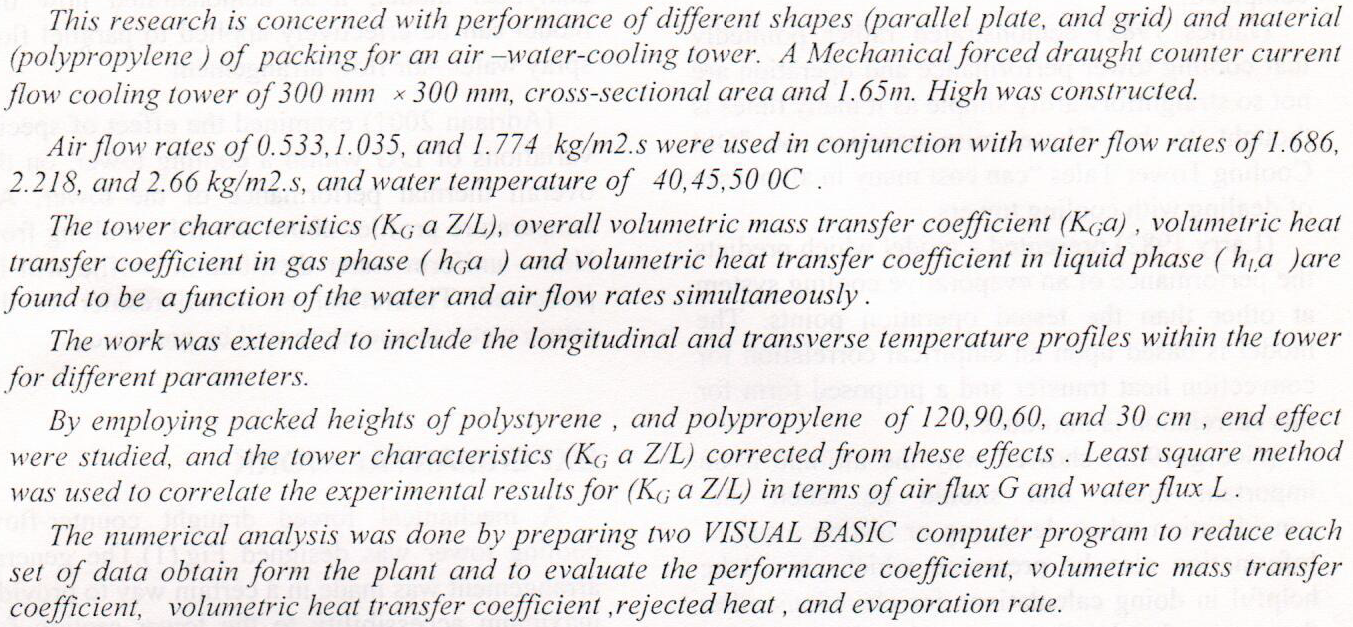
Fuzzy logic is used to solve the load flow and contingency analysis problems, so decreasing computing time and its the best selection instead of the traditional methods. The proposed method is very accurate with outstanding computation time, which made the fuzzy load flow (FLF) suitable for real time application for small- as well as large-scale power systems. In addition that, the FLF efficiently able to solve load flow problem of ill-conditioned power systems and contingency analysis. The FLF method using Gaussian membership function requires less number of iterations and less computing time than that required in the FLF method using triangular membership function. Using sparsity technique for the input Ybus sparse matrix data gi
... Show MoreThe analytic solution for the unsteady flow of generalized Oldroyd- B fluid on oscillating rectangular duct is studied. In the absence of the frequency of oscillations, we obtain the problem for the flow of generalized Oldroyd- B fluid in a duct of rectangular cross- section moving parallel to its length. The problem is solved by applying the double finite Fourier sine and discrete Laplace transforms. The solutions for the generalized Maxwell fluids and the ordinary Maxwell fluid appear as limiting cases of the solutions obtained here. Finally, the effect of material parameters on the velocity profile spotlighted by means of the graphical illustrations
This thesis was aimed to study gas hydrates in terms of their equilibrium conditions in bulk and their effects on sedimentary rocks. The hydrate equilibrium measurements for different gas mixtures containing CH4, CO2 and N2 were determined experimentally using the PVT sapphire cell equipment. We imaged CO2 hydrate distribution in sandstone, and investigated the hydrate morphology and cluster characteristics via μCT. Moreover, the effect of hydrate formation on the P-wave velocities of sandstone was investigated experimentally.
To ensure fault tolerance and distributed management, distributed protocols are employed as one of the major architectural concepts underlying the Internet. However, inefficiency, instability and fragility could be potentially overcome with the help of the novel networking architecture called software-defined networking (SDN). The main property of this architecture is the separation of the control and data planes. To reduce congestion and thus improve latency and throughput, there must be homogeneous distribution of the traffic load over the different network paths. This paper presents a smart flow steering agent (SFSA) for data flow routing based on current network conditions. To enhance throughput and minimize latency, the SFSA distrib
... Show More (4)
(4)
 (2)
(2)
Abstract
The current study presents numerical investigation of the fluid (air) flow characteristics and convection heat transfer around different corrugated surfaces geometry in the low Reynolds number region (Re<1000). The geometries are included wavy, triangle, and rectangular. The effect of different geometry parameters such as aspect ratio and number of cycles per unit length on flow field characteristics and heat transfer was estimated and compared with each other. The computerized fluid dynamics package (ANSYS 14) is used to simulate the flow field and heat transfer, solve the governing equations, and extract the results. It is found that the turbulence intensity for rectangular extended surface was larg
... Show More (3)
(3)
Transport layer is responsible for delivering data to the appropriate application process on the host computers. The two most popular transport layer protocols are Transmission Control Protocol (TCP) and User Datagram Protocol (UDP). TCP is considered one of the most important protocols in the Internet. UDP is a minimal message-oriented Transport Layer protocol. In this paper we have compared the performance of TCP and UDP on the wired network. Network Simulator (NS2) has been used for performance Comparison since it is preferred by the networking research community. Constant bit rate (CBR) traffic used for both TCP and UDP protocols.
Experimental and theoretical investigations are presented on flocculation process in pulsator clarifier. Experimental system was designed to study the factors that affecting the performance of pulsator clarifier. These factors were water level in vacuum chamber which range from 60 to 150 cm , rising time of water in vacuum chamber which having times of 20,30 & 40 seconds , and sludge blanket height which having heights of 20,30 & 40 cm .The turbidity and pH of raw water used were 200 NTU and 8.13 respectively. According to the jar test, the alum dose required for this turbidity was 20 mg/l .The performance parameters of pulsator clarifier such as , turbidity ,total solid TS , shear rate , volume concentration of sludge blanket an
... Show MoreCooperation spectrum sensing in cognitive radio networks has an analogy to a distributed decision in wireless sensor networks, where each sensor make local decision and those decision result are reported to a fusion center to give the final decision according to some fusion rules. In this paper the performance of cooperative spectrum sensing examines using new optimization strategy to find optimal weight and threshold curves that enables each secondary user senses the spectrum environment independently according to a floating threshold with respect to his local environment. Our proposed approach depends on proving the convexity of the famous optimization problem in cooperative spectrum sensing that stated maximizing the probability of detec
... Show More (6)
(6)
 (5)
(5)

